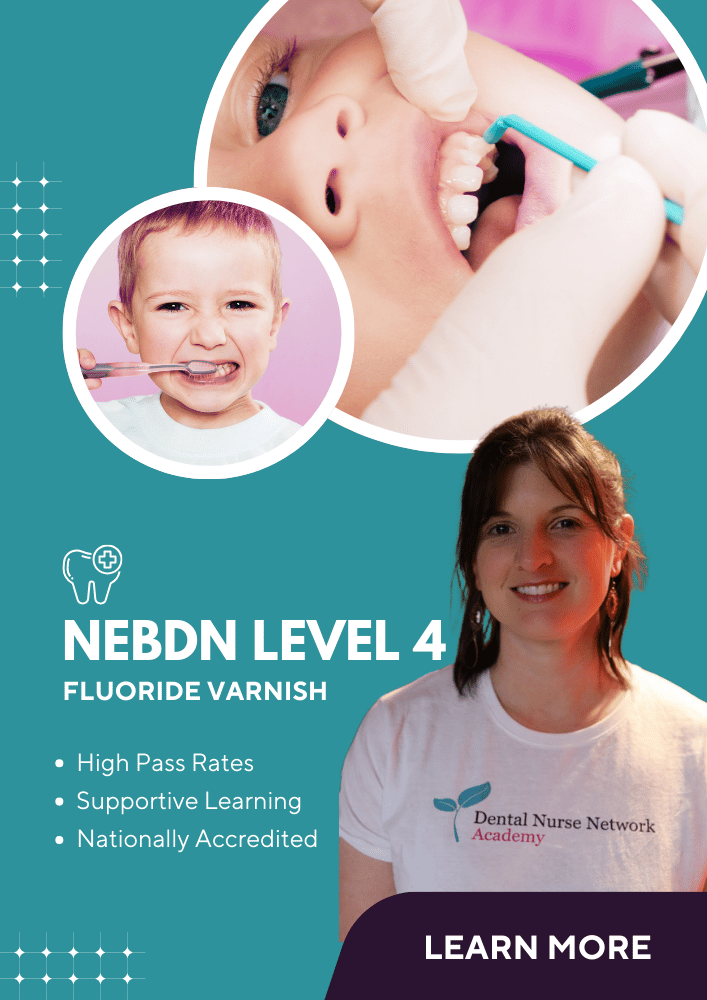 During the placement of a dental implant, the implant dental nurse plays an important role within the implant team. This article discusses the different aspects of the dental nurse’s role, from cross-infection control to aftercare, and considers how these important contributions influence the success rate of dental implants.
During the placement of a dental implant, the implant dental nurse plays an important role within the implant team. This article discusses the different aspects of the dental nurse’s role, from cross-infection control to aftercare, and considers how these important contributions influence the success rate of dental implants.
The patient will attend many appointments during the planning and placement of a dental implant. These are:
- The initial appointment – this is to explain what the treatment involves.
- The assessment appointment – this involves planning and preparation for the proposed placement of the dental implant. At this stage, a treatment plan is made, and the clinician’s and patient’s expectations are clarified.
- The surgical appointment – this is when the dental implant is placed.
- Review appointment – this is to provide post-operative care, such as suture removal.
- Implant exposure – this takes place if a healing cap was placed at the surgical appointment.
- Abutment placement and impressions for restoration.
- Restoration fit stage – this is when a restoration is fitted to the implant.
- Follow-up appointment – this is to ensure that both the clinician and the patient are happy with the result.
Although the dental nurse plays a vital role in all stages of implant placement, the rest of this article will concentrate on the nurse’s role when assisting with the surgical placement of the dental implant.
Surgical Placement of Dental Implants
The role of an implant nurse during an implant placement procedure can be divided into different parts. These are:
- Pre-operative care of the patient
- This involves caring for the patient prior to surgery. Duties include:
- Welcoming the patient into the surgery and checking that the patient has eaten in order to avoid the risk of a faint.
- Checking the patient’s medical history, treatment plan and written consent, all of which are important to ensure the patient fully understands the procedure being carried out and to meet legal requirements.
- Asking the patient to rinse their mouth with a chlorhexidine mouthwash for one minute to help lower bad bacteria in the oral cavity.
- Helping the patient with placement of protective equipment such as safety goggles and theatre cap.
- If required, instructing the patient to take antibiotic cover prescribed by the clinician – the type of antibiotic will depend on the patient’s medical history.
Preparation of the dental surgery for implant placement
Once the patient has been welcomed into the surgery, the clinician will discuss with the patient the proposed treatment plan and answer any questions the patient may have. During this time, the surgery will be being prepared for the implant procedure. Instruments and equipment will be made readily available but will stay in sterile packaging until an aseptic working environment has been created.
When an implant is being placed surgically, there are normally two implant nurses present, each with different roles. The first nurse – the non-sterile ‘runner’ nurse – helps with preparation of the surgery and gowning of the implant team. The second nurse – the sterile nurse or scrub nurse – assists with the implant procedure. The sterile nurse scrubs up before the procedure and wears sterile gloves and a gown. The non-sterile nurse remains at least 1 ft. away from all sterile areas, which helps to maintain asepsis.
Having two nurses present helps to create an aseptic working environment, alongside the use of:
- Sterile drapes;
- Sterile gowns and gloves;
- Sterile equipment;
- Sterile bagged instruments;
- Disposable items;
- Zoning.
All the above reduce the risk of bacterial contamination, thus increasing the likelihood of implant success.
Surgical procedure
During surgery
Once the patient is prepared for surgery and local anaesthetic has been administered, the sterile nurse has many different roles. The most important of these is supporting, reassuring and monitoring the patient throughout treatment.
It is essential that the patient feels supported and reassured so that they feel comfortable whilst having treatment and are happy to tell the dental team if they need a break or feel any discomfort.
Other essential duties the sterile implant dental nurse undertakes during the surgical placement of a dental implant are:
- Ensuring that if an implant stent is being used, the stent has (prior to procedure) been soaked in diluted hydrochloric acid for ten minutes, rinsed, and then placed in chlorhexidine mouthwash ready for placement.
- Assisting the clinician during implant placement.
- Creating a clear working field – retracting soft tissues.
- Anticipating the clinician’s needs and passing the required instruments.
- Undertaking aspiration.
- Assisting the clinician with suture placement.
- Maintaining asepsis.
- Ensuring excellent cross-infection control throughout the procedure.
- Monitoring irrigation when the clinician is osseous drilling, thus making sure that the bone does not overheat. (An example of this would be correct positioning of the aspiration tube to ensure the bone is irrigated before excess saline is removed.) If the bone is overheated, this could lead to localised bone necrosis resulting in implant failure.
After surgery
On completion of implant placement, it is the implant nurse’s role to make sure the implant packaging is recorded in the patient notes so that the implant serial number is readily available.
Once the patient’s bib, theatre cap and protective goggles have been removed and their face has been cleaned of any debris, post-operative advice is given.
The patient will be asked to take anti-inflammatory medicines, antibiotics and pain relief (if needed) as directed by the clinician. The patient will be given these instructions verbally and in writing.
The nurse’s role is then to give post-operative instructions. These instructions include:
- Advising the patient how the procedure went.
- Recommending that if the patient has any discomfort, they should take the normal pain relief they would take for a headache. If the patient has been prescribed pain relief, they should take their prescribed medication as required, following the clinician’s and manufacturer’s guidelines.
- Advising that if the clinician has prescribed antibiotics, the patient should complete the course.
- Informing the patient that they might have some swelling and bruising.
- Advising the patient that the use of an ice pack can help with swelling. If the patient does not have ice packs, they can use ice wrapped in a tea towel.
- Telling the patient to avoid physical exertion for the next 48 hours.
- Asking the patient to avoid alcohol and smoking after implant placement. Whilst the implant site is healing, smoking and alcohol can slow the healing process.
- Asking the patient to avoid hot drinks for the next 24 hours and to modify their diet, eating only soft foods for the next couple of days.
- Recommending that the next day, the patient should use chlorhexidine mouthwash or warm salty mouthwashes to help the implant site heal.
- Telling the patient that if they normally wear a denture, they should wear this as the clinician has advised.
- Telling the patient that if the implant site does begin to bleed, they should use a piece of sterile gauze and apply gentle pressure for about twenty minutes – this should make the bleeding stop.
- Telling the patient that if they have any worries or concerns, they should not hesitate to contact the practice. The patient should also be given the clinician’s number in case they have any worries or concerns out of practice hours.
Other post-operative advice that should be given relates to the importance of keeping the implant site clean. This oral hygiene advice is reiterated at all appointments. The patient is told the importance of a good oral health regime to keep both natural teeth and the dental implant healthy. It should be explained to the patient that just as natural teeth can get gingivitis and periodontitis, the dental implant can get peri-implant mucositis (inflammation of the gingiva with no bone loss) or peri-implantitis (inflammation of the gingiva with bone loss).
Each patient will be given an individual oral health regime based on their specific needs and influenced by the implant restoration. An example of oral health instruction given to a patient who has had a single implant with implant crown would be:
- Brush teeth twice daily for a minimum of two minutes using a small-headed medium tooth brush and a fluoride toothpaste.
- Clean teeth interdentally with floss or TePe brushes.
- Clean around the dental implant using floss or Super Floss, criss-crossing the floss and moving the floss in a shoe-shine manner.
- Clean the gum margins around the implant – use of a single-tufted toothbrush is recommended.
- In addition to tooth-brushing, but at a different time to brushing, the use of a mouthwash is also recommended to help keep the implant healthy.
- It is important to maintain regular dental check-ups and hygienist visits.
- If possible, stop smoking – there are numerous health benefits of stopping smoking, and support can be offered.
If the patient has just had a surgical implant placed, remind them to be careful when cleaning around the implant site and sutures whilst the site is healing.
Although studies have shown that dental implants have a reported success rate of more than 90% over 15 years, there are factors that can affect the dental implant’s integration, leading to integration failure. One of the main causes of this is peri-implantitis – gum inflammation around the dental implant and bone loss. Peri-implantitis is caused by poor oral hygiene and the accumulation of plaque around the dental implant. At all stages of the dental implant procedure, from planning to the implant review, it is the implant nurse’s role to discuss with the patient the importance of good oral hygiene. From spending time with patients and providing oral hygiene instruction, we can discuss and demonstrate new skills so that the patient can maintain a healthy mouth, improving the dental implant’s chances of success.
Smoking can also reduce the likelihood that an implant will be successful. Smoking affects the local blood supply, so it can affect the healing process and lead to implant failure. As an implant nurse and an oral health educator, part of my role is providing smoking cessation advice. As a dental professional, educating patients on the effects of smoking on the oral tissues and the benefits of giving up smoking not only improve the chances of successful implant placement but can improve the patient’s general health.
As previously discussed, the patient will attend many appointments during the planning and placement of a dental implant. At each stage, the implant dental nurse will play an important role in ensuring the treatment is successful.
From working as an implant dental nurse, I know what a vital part of the implant team I am. I provide excellent cross-infection control, which is essential for implant integration, and assist with implant placement. I also give important patient advice, guidance and instruction, and act as a chaperone whilst supporting both the clinician and the patient. The role is challenging in many ways but extremely rewarding – especially when you get to see the finished results and the difference that dental implants make to people’s lives.
References
Miller, Mary, (2008) Implant Dental Nursing. Blackwell, Oxford.
 Written by Emma Edwards RDN
Written by Emma Edwards RDN
NEBDN National Certificate in Dental Nursing, NEBDN Dental Sedation Nursing, NEBDN Oral Health Education , NEBDN Dental Radiography, Kings Certificate in Implant Nursing, Level 5 Diploma in Leadership and Management, Level 3 Award in Education and Training.



